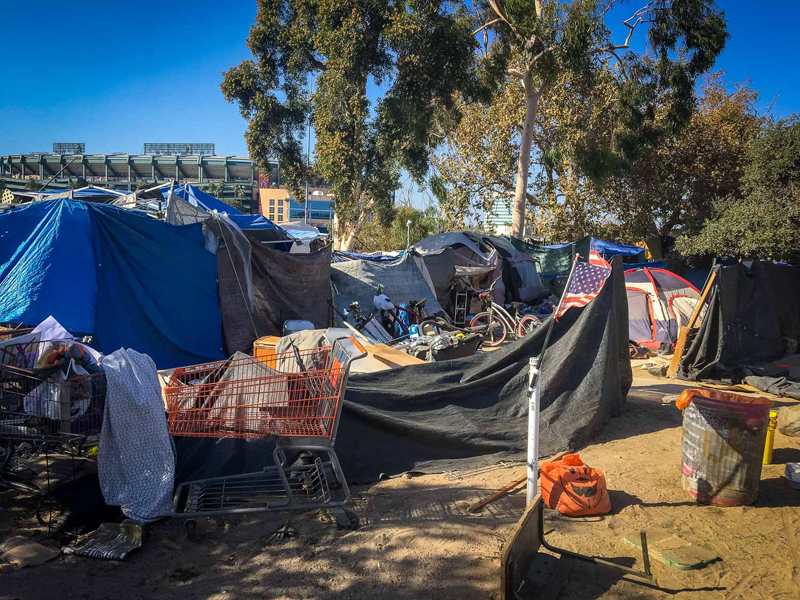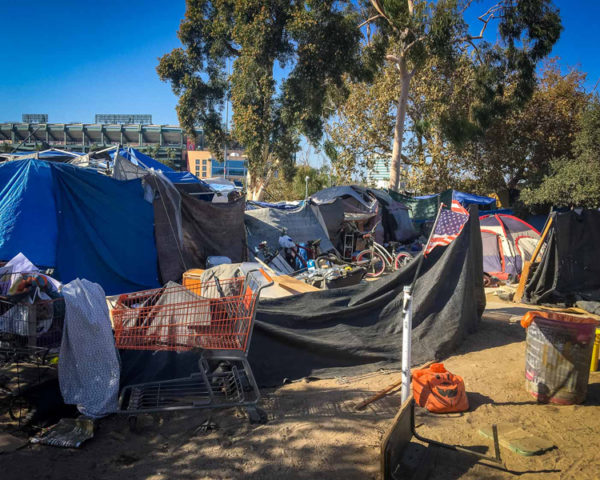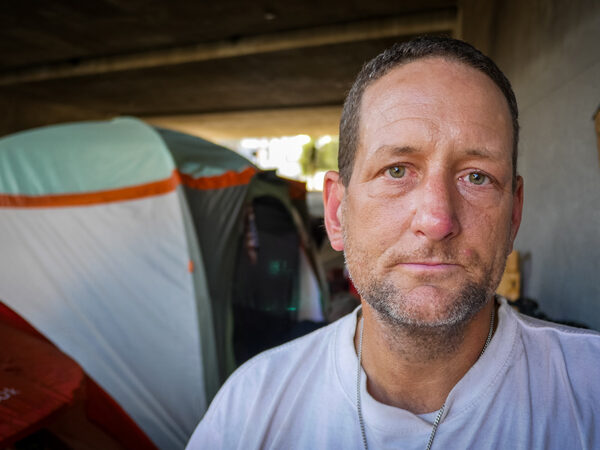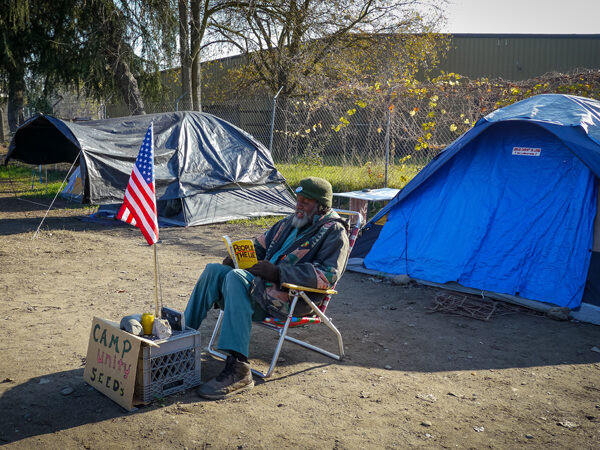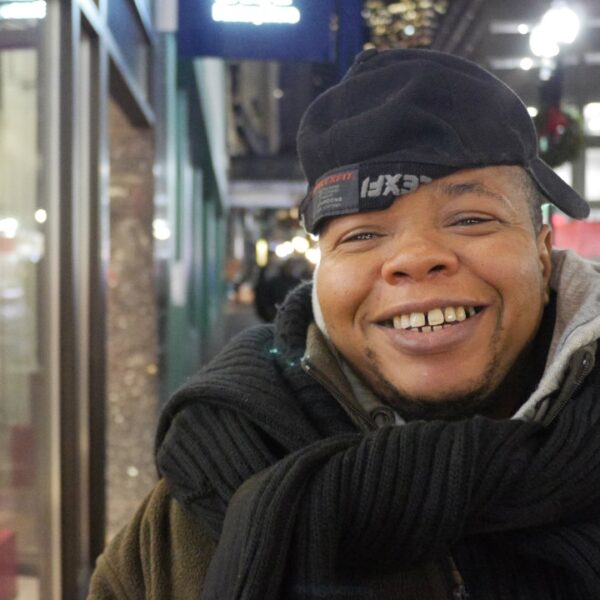How Many People Live in Tent Encampments?
According to a report by the U.S. Department of Housing and Urban Development, the mid-2010s saw a rise of tent cities in the U.S. as the cost of housing increased. However, a 2024 Supreme Court ruling paved the way for cities to evict encampment residents and ban camping without being constitutionally required to provide follow-up shelter.
As of May 2025, over 200 anti-homeless, anti-survival ordinances have been introduced nationwide, the majority of which are camping bans.
People experiencing homelessness group tents together for security and community creating encampments. Some are organized, self-governed groups that operate like a small town such as Dignity Village in Portland, Oregon.
It is difficult to accurately count the number of tent cities and people living in them. While many encampments are visible and known in their communities, others are purposefully hidden from public view due to fear of eviction. In some cities like Seattle, Washington, tent encampments are managed by non-profit organizations that provide services to the people living there.
Many municipal governments do not support encampments on public property. Instead, they conduct sweeps and raids that force people to move elsewhere. Oftentimes, people must leave precious belongings behind or face arrest.
Fewer Tent Encampments Don’t Equal Less Homelessness
Tent encampments are on the decline – but make no mistake, this is not because more homes are available, or housing systems are improving.
In 2023, Phoenix’s largest homeless encampment, “The Zone,” was dismantled, where over 1,000 people slept. By late 2024, San Francisco’s street tent count hit a record low. And in the first half of 2025, Minneapolis saw its homeless encampments fall by two-thirds.
This sounds like progress, but the decrease in encampments doesn’t indicate a decrease in homelessness, but rather a concerted effort to clear tent encampment sites, often without providing residents with safe or permanent housing options.
In Minneapolis, police enforcement actively blocked encampments from forming. In San Francisco, police and street cleaners took a heavy-handed approach to clearing tents. And in Phoenix, those 1,000-plus people were displaced following a court order.
Learn more about how tent cities operate.
Policy Studies Journal found that any policy that makes life difficult for people living on the street, such as encampment bans, doesn’t actually decrease homelessness. But as of 2025, cities that don’t enforce camping bans or other aggressive measures risk losing federal dollars. The Trump administration has pledged to steer funding away from permanent housing, instead rewarding cities that combine encampment crackdowns with a “treatment-first” approach.
There is an ongoing debate about whether cities should sanction tent encampments. Cities do not have the resources to increase the number of beds in shelters or build affordable housing. Sanctioned tent encampments can provide a safe place for people to live and store their belongings. The big question though is—are tent cities long-term solutions to homelessness in the U.S.?







